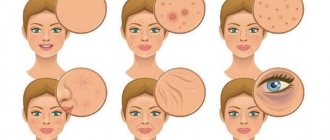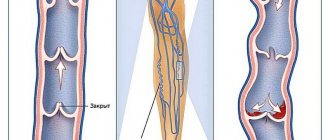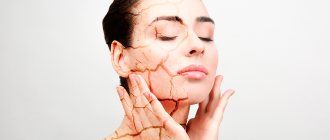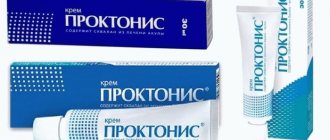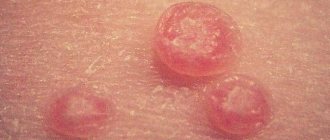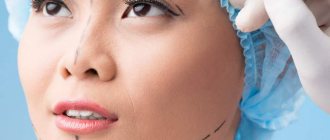What is pallor and weakness
Such a condition may well indicate not only harmless overwork, but also heart disease. Hypertension, arrhythmia, tachycardia, angina pectoris, myocarditis and even myocardial infarction - with these pathologies, pallor and weakness are almost always encountered.
This video will tell you what pallor and weakness are, and why a sufficient level of iron in the body is so important:
Gray complexion
Gray color is described in the following conditions:
- Leukemia. These pathologies are very insidious, masquerading as ARVI: weakness, drowsiness appear, and body temperature rises. Most often they are detected when a general blood test is prescribed.
- Diseases of the digestive system: pancreatitis, cholecystitis. In this case, nausea, bloating, bowel movements, pain in the upper abdomen when eating spicy, smoked or fatty foods, or alcohol are noted.
- Smoking and stress.
- After suffering serious illnesses.
There are several main reasons for changes in complexion:
- natural aging process;
- heredity;
- unhealthy lifestyle, drinking alcohol, smoking;
- lack of sleep;
- poor nutrition;
- acute and chronic diseases.
If this problem occurs, you should consult a doctor, as this may indicate a serious illness. A gray face, as a rule, indicates problems of the gastrointestinal tract, and with pancreatic disease, the face becomes sallow. Also, complexion may change due to long-term use of certain antibiotics.
In addition, smoking and alcohol abuse are often the cause of a gray and sallow complexion. Poor nutrition and a sedentary lifestyle negatively affect the condition and color of the skin. Regardless of the cause, when your complexion changes, you need to take steps to restore your face to a healthy, radiant appearance.
Varieties of symptoms
Symptoms are divided into several types:
- Pathological pallor . It is characterized by a long course, but can appear suddenly. It usually develops due to internal pathological processes.
- Diffuse pallor accompanies anemia, but also occurs under the influence of stressful situations, when peripheral vessels are compressed and blood flow is disrupted. Another diffuse change in skin color accompanies a change in blood composition, which occurs, for example, with anemia.
Pallor can also be subdivided by shade. Experienced doctors are accustomed to noting the patient’s complexion during the examination, outlining possible causes and clarifying their assumptions with laboratory and instrumental studies. Various pathological processes have characteristic changes in skin tone:
- Waxy pallor . Appears with anemia of hypoplastic and aplastic types.
- Sallow-gray skin is characteristic of diseases of a purulent-septic nature.
- Marble pallor develops in a state of shock.
- A greenish tint is noticeable in patients with chlorosis.
- The dull color of coffee with milk is characteristic of hemolytic anemia.
- Yellow color . Appears with hemolytic problems, liver pathologies, and also with jaundice.
Weakness as a symptom has a pathological and physiological nature.
- In the first case, it is caused by various disturbances in the functioning of the body.
- In the second case, it appears only after exercise, does not pose a danger, and therefore is not subjected to physical examination.
Yellow complexion
Problems with the liver can be judged by the yellowish-dirty and gray tint of the skin. People around you are beginning to ask the question more often: “Are you sick?” The skin not only changes color, but also appears excessively oily or dry. Often the whites of the eyes turn yellow due to increased bilirubin, and brown spots appear on the body in the form of pigmentation.
All this is complemented by irritability, apathy, and a weakened immune system. The listed signs may indicate diseases of the gallbladder and intestinal tract. Toxins entering the lymphatic system carry them to internal organs, resulting in intoxication throughout the entire body.
After a stormy night or with insomnia, our skin is in a stressful state. A yellowed face, puffy eyelids, dark circles and bags under the eyes, impaired blood flow - all this is not normal and indicates a problem with sleep. None of us wants to look bad and constantly hear: “You are sick,” so it is necessary to fight lack of sleep so as not to trigger the body’s premature decline.
Excessive consumption of sweets, flour, fried foods, as well as drinking alcoholic beverages and smoking reduce the tone of our epithelium. The skin looks inflamed, stale, its elasticity decreases, and a yellow complexion appears. The reasons that prompt a person to bad habits must be exterminated. Indeed, in addition to external unattractiveness, serious health problems arise.
How to identify them in yourself
Reduced performance, general weakness and pallor of the skin are often accompanied by other symptoms:
- sweating,
- respiratory disorders,
- disruptions in cardiac function,
- sores in the mouth,
- bruises from minor injuries,
- weight loss,
- epigastric pain,
- cyanosis,
- lip discoloration,
- dizziness,
- "fog" before the eyes.
If you identify additional symptoms listed above, you should immediately consult a doctor! It may happen that a serious pathological process is occurring in the body, which can be dangerous for humans.
Especially often, such signs as pale skin and sudden weakness are accompanied by dizziness.
The next chapter will tell you about the causes of general weakness and constant pallor of the skin of the face and other parts of the body.
Elena Malysheva will talk about weakness and pallor as symptoms of anemia in her video:
Pale face in children
Mothers often wonder why their child’s face is pale. A doctor will help determine the cause by examining the baby’s skin, oral and nasal cavities, eyes and nails. Only after this will he be able to objectively assess his condition. If the child is active, eats well and plays, then the cause may be heredity or a lack of vitamin D.
If the baby is lethargic, drowsy, and gets tired quickly, then this may indicate the development of anemia. Parents of such a child should be especially concerned if dark circles appear under his eyes and bruises appear on his body for no apparent reason. This may be a symptom of diseases of the circulatory system or urinary tract.
Under no circumstances should you make a decision about treating a child on your own without examining a doctor.
What diseases and disorders may the symptom indicate?
Paleness and weakness accompany a truly large number of different diseases. Moreover, both harmless and posing a threat to the patient in the distant future. Here is a list of reasons for this symptom:
- heart attack;
- injuries;
- haemorrhoids;
- peptic ulcer;
- intestinal tumors;
- internal bleeding;
- pregnancy;
- anemia;
- infectious disease;
- pathologies of the heart and blood vessels;
- diabetes;
- kidney and liver diseases;
- problems with the thyroid gland.
Paleness often appears in old age, when the skin lacks moisture and collagen ceases to be produced in sufficient quantities. In this case, a decrease in cardiac activity also has an effect. Similar signs appear with low physical activity, due to poor environmental conditions or alcohol abuse.
Muscle weakness sometimes indicates overexertion, but can also indicate muscle atrophy. There are a number of reasons that can cause this symptom. These can be neurological, inflammatory, infectious diseases, tumors or injuries, as well as genetic predisposition.
Blue-red complexion
Back in the Middle Ages, facial redness received a persistent name - rosacea, although even before that it was called differently: “wine acne,” for example, or “curse of the Celts.” The first name demonstrates the connection between libations and disease, noted in antiquity, and the second shows that the disease mainly affects light-skinned people, Scandinavians, for example.
Red face: the causes and nature of the disease are completely clear today. Rosacea is a hereditary disease that affects people over thirty years of age who are fair-skinned. Women get sick more often after thirty years of age, which is apparently due to hormonal problems.
The cause of facial redness is the expansion of blood vessels located on the surface of the skin - with rosacea, this expansion is irreversible, the vessels no longer narrow, which may also be a consequence of improper functioning of the trigeminal nerve. Very often, rosacea occurs instantly, under the influence of one of the provoking factors, among which the most common are:
- caffeine or alcohol abuse,
- an excess of spicy and smoked foods in the diet,
- prolonged exposure to the sun or solarium,
- severe stress,
- hormonal therapy or hormonal diseases,
- prolonged irritation from cold or high temperatures (very often, rosacea affects chefs and pastry chefs who are in production associated with the release of hot steam).
How to deal with such signs
- If both symptoms appeared as a result of psychological or physical overload, then to improve the condition it will be enough to normalize your work schedule, rest and prevent this from happening in the future. You need to eat healthy food, and it is also important to walk more often. Saturation of blood with oxygen will contribute to good health.
- If you have an iron deficiency, the first priority is to restore your iron levels. Long-term anemia is dangerous to health and can cause many cardiovascular problems. That is why it must be treated under the supervision of a doctor, periodically undergoing tests and taking medications selected on an individual basis.
- To further help you recover quickly, you should include enough iron-rich foods in your diet. Weakness and pallor will go away after 2-3 weeks of such complex treatment, but it must be continued for at least 3 months! It is during this period that complete restoration of well-being occurs.
- Feeling weak and pale sometimes indicate serious illness, so self-medication is the worst solution in this case . First you need to undergo examination procedures, and then trust the doctor. He will select not just competent, but also appropriate therapy. After all, you need to fight not with the symptoms themselves, but with the cause that causes them. If pallor and weakness develop quickly and are accompanied by a number of other signs (sweating, shortness of breath, palpitations), you cannot ignore your condition. You need to go to the hospital as soon as possible.
The doctor will tell you how to help yourself with weakness caused by congenital diseases in the video below:
How to get rid of pallor
- If your face or entire body is too pale, you can recommend cosmetics - blush, powder, self-tanning.
However, all these tricks will not help you maintain your blush all the time. It is necessary to solve the problem, not mask its consequences.
- If there are no diseases that require treatment, you can correct the situation, so to speak, at home.
- All you need to do for this is to adjust your diet, devote more time to rest, avoid stressful situations, get rid of bad habits, and do not forget about physical activity.
In this case, you will never again have to justify your paleness with an aristocratic origin!
Video
For example, yellowish skin
- a sure sign of liver disease, and numerous acne rashes indicate either a hormonal imbalance or problems with the intestines.
And what disease causes the hands and the rest of the skin to look pale?
And does a pale face always indicate illness? Let's try to figure out what disease causes human skin to turn pale.
If, in addition to pale skin, there are symptoms such as low blood pressure, fatigue, irritability, then it is quite possible to assume the presence of iron deficiency anemia. Of course, an accurate diagnosis can only be made through a blood test. Anemia is a common disease, especially among young girls and women of childbearing age. And, quite often, the cause of the disease is adherence to a strict diet. Pale skin appears due to insufficient filling of blood vessels located close to the surface of the skin, as well as a low level of hemoglobin. Patients are troubled by shortness of breath, they are constantly cold, their hands and feet are especially cold. Anemia is a serious disease; if you suspect this diagnosis, you need to contact a clinic, and also significantly reconsider your diet, you need to consume more iron. The doctor will probably prescribe iron-containing drugs, as well as B vitamins and folic acid. In addition to medications, you should eat more foods containing iron - meat, liver, eggs. From plant products - beans, peas, broccoli, spinach. However, iron from plant foods is less absorbed, so you need to take additional vitamin C, or eat citrus fruits, drink.
Directly depends
from its blood supply. Knowing this fact, you can easily determine which disease causes a person’s skin to turn pale. For example, the pallor of the left hand indicates weak heart function.
But it's not just low hemoglobin levels that can cause pale skin. In kidney diseases, especially chronic ones, pallor is caused by vasoconstriction, especially small capillaries, and swelling. If a patient has glomerulonephritis, the skin will be swollen and pale, although anemia may not be detected. In severe cases of this disease, a slight jaundice is added to the dryness and pallor of the skin. Also, with chronic inflammatory kidney diseases, bruises form on pale skin in the absence of external causes. Fatigue, poor appetite, general weakness also appear, sometimes the temperature rises, this indicates the presence of an inflammatory process. In chronic renal failure, blood pressure is always elevated. Under no circumstances should kidney disease be neglected. The earlier treatment is started, the greater the chance of recovery. Lack of treatment can lead to necrosis of the kidney, after which the only way of salvation will be an organ transplant.
Pale skin may indicate heart failure.
Often mealy pallor occurs during an attack of angina pectoris. At this time, the patient is bothered by pain, which can radiate to the neck, arm, or less often to the back. Sometimes there is also a feeling of tightness and burning. The patient's body temperature decreases, breathing becomes intermittent. At the first stage, myocardial infarction occurs with the same symptoms. The difference is that an angina attack passes quickly enough, but with a heart attack the patient’s condition continues to deteriorate. Therefore, when the first pain in the heart appears, especially accompanied by pallor, rapid breathing and heartbeat, you must immediately call an ambulance.
Pale skin may also indicate a serious illness such as gastric ulcer
or duodenum. These ailments are often accompanied by internal bleeding. Additional symptoms include dizziness, weakness, “fog” before the eyes or “flickering spots”. Internal bleeding is characterized by bloody vomiting and black, loose stools. This is a serious illness that requires immediate hospitalization.
Hormonal imbalances also affect the condition of the skin. Pale, clammy skin is common in people with diabetes. In patients with hypothyroidism (decreased thyroid function), the skin becomes dry, pale, cold to the touch, and swollen.
Pallor is a common sign of various infectious diseases
. In particular, pulmonary tuberculosis. Patients with tuberculosis usually lose a lot of weight, their facial features become sharper, their facial skin becomes milky white, only there may be an unnaturally bright blush on their cheeks. In 19th-century literature there is even the epithet “consumptive pallor,” which describes an unhealthy complexion.
Pallor may occur
and after recovery from any infectious disease, but this condition will not last long, until the end of the recovery period.
Of course, pale facial skin does not always indicate such serious diseases as described above. Often a person looks pale after being in the cold for a long time. In this case, the blood is redirected to the internal organs, and the skin turns pale.
People look pale
who lack physical activity. Their hearts work at a lower intensity than those who move a lot. In addition, physically active people have more red blood cells in their blood, which are responsible for transporting oxygen to tissues and organs. Thus, in people who neglect physical education, the body suffers from a lack of oxygen.
In addition, other factors that can be combined under the general name unhealthy lifestyle influence skin color. This can be a variety of stress, and poor ecology. As well as bad habits - smoking and drinking alcohol. These factors are not limited to their influence solely on the skin; all unhealthy habits undermine the human body, causing various diseases.
– unhealthy complexion tone (pale, earthy-gray, lifeless). A dull complexion is not always associated with the aging process of the skin and can occur even in young people who lead an unhealthy lifestyle or suffer from various ailments. As a rule, a dull complexion is combined with increased dryness and sensitivity of the skin. The solution to this cosmetic problem requires giving up bad habits and carrying out home and salon health-improving activities. Among the latter, peelings, biorevitalization, mesotherapy, ultraphonophoresis, massage, etc. may be recommended for a dull complexion.
As a result of chronic lack of sleep, the skin does not have time to rest and recover normally overnight, resulting in pallor, deteriorating complexion, and the process of premature cell aging. Dietary restrictions lead to the skin not receiving enough essential nutrients, microelements and vitamins, which are the “building material” for new cells. Staying in one position for a long time (for example, sitting at a computer) leads to overstrain and spasm of the muscles of the cervical-collar region, resulting in impaired blood circulation in the neck and head. All this is immediately reflected in the appearance of the skin - the complexion becomes dull and lifeless.
Excessive use of tanning (prolonged sunbathing or frequent visits to the solarium) contributes to the disruption of the hydro reserve, loss of elasticity and photoaging of the skin, causing the appearance of hyperpigmentation. Therefore, skin damaged by excess ultraviolet radiation looks dehydrated, dull and tired. The complexion changes due to improper skin care or lack thereof. Lack of fresh air, as well as poor environmental conditions, can also cause a dull complexion. It is not without reason that this cosmetic problem is considered relevant for residents of large cities suffocated by smog.
In winter, the condition of the skin is negatively affected by low outdoor temperatures, frosty winds, dry air in apartments and offices, lack of sunlight and vitamin deficiency. Therefore, by the beginning of spring, many women notice that the skin has lost its freshness and the complexion has become dull. Unhealthy complexion can be caused by the accumulation of dead cells and dust covering the skin - oily skin is most susceptible to contamination. In addition, with age, the regeneration of the epidermis slows down, keratinized cells exfoliate more slowly, which also leads to dullness of the epidermal layer.
The expression “smoker's face” has long come into everyday use. Premature wrinkles, grayish tint and dry skin, sunken cheeks, deep nasolabial folds - these are typical touches to the portrait of a person who cannot part with a cigarette. Toxic substances contained in tobacco smoke cause spasm of skin capillaries. In addition, when smoking, the amount of carbon monoxide in the blood sharply increases. This means that the skin of the face is poorly supplied with blood and enriched with nutrients and oxygen. Therefore, smoking inevitably leads to changes in the structure of the skin - increased dryness, sagging, uneven and dull complexion, premature aging.
In some cases, a dull complexion may reflect poor overall health. Thus, dry and gray skin, brittle nails and hair loss are often signs of hypothyroidism. Changes in the condition and color of the skin are caused by gastrointestinal diseases (cholecystitis, pancreatitis, constipation, dysbacteriosis), osteochondrosis of the cervical spine, long-term use of medications, menopause, etc.
Pale skin - what to do, how to treat?
1. If your health allows you, take up physical exercises that will help speed up blood circulation, normalize the tone of blood vessels, and your overall health will improve. After all, the faster the blood moves, the better the supply of oxygen and other nutrients to all corners of your beautiful body created by God.
2. If you have been indoors for a long time, especially with poor ventilation, it’s time to go outside, into the fresh air and take a short walk along it. Movement + oxygen = pinkish skin tone.
3. If you become pale and sweaty with dizziness after eating food, tilt your head for a couple of minutes so that it is below the level of your heart.
4. Facial massage - will increase blood circulation in the head, and accordingly a blush will appear on the face.
5. Proper nutrition - will regularly supply the body with the vitamins and minerals necessary for its proper functioning, which will reduce the negative impact of any pathological factor to almost 0.
6. You can increase the level of hemoglobin in the blood; to do this, you need to focus on eating foods rich in iron. To do this, eat apples, red meat, drink fresh juices with an apple-beetroot or carrot-apple base.
The following mixture is also useful for increasing hemoglobin: combine prunes, dried apricots, figs, raisins, lemon, walnuts and natural honey in equal proportions. Grind everything thoroughly, put it in a glass jar and take 2 times a day, 2 tbsp. spoons, 20 minutes before meals. Store the product in the refrigerator.
7. Healthy sleep is the key to success not only in matters of skin color, but also in the general condition and health of the body, giving strength to perform daily tasks.
Causes of pale skin
Pale skin primarily appears when two mechanisms develop in the body:
1. Poor circulation - usually develops when blood vessels narrow, especially peripheral ones, i.e. those that are closer to the surface. Most often occurs due to stress or fever.
2. Decreased levels of erythrocytes (red blood cells) and/or hemoglobin in the blood. Actually, the red color of red blood cells is given by hemoglobin, which is part of their composition. The red color of hemoglobin is given by iron, of which it is partially composed.
The launch of the above mechanisms occurs as a result of the influence of the following factors:
- Loss of a large amount of blood, which can result from open injuries, wounds, internal bleeding, menstruation, surgery;
- Reduced level of hemoglobin in the blood - strict diets, anemia;
- Hypovitaminosis and avitaminosis, especially insufficient intake of vitamins B9 (folic acid), B12 (cobalamins) and iron.
- Pregnancy, during which it is also very important to monitor the increased need for vitamins and minerals, especially iron;
- Diseases and pathologies of the cardiovascular (atherosclerosis, heart failure, coronary heart disease), endocrine (hypothyroidism, diabetes mellitus), urinary (nephritis, urolithiasis) and nervous systems (VSD), as well as infectious (various acute respiratory infections, encephalitis, meningitis) and oncological diseases;
- Poisoning of various etiologies, incl. from waste products of infectious agents inside (helminthic infestations, bacterial infections, etc.);
- Hypothermia of the body;
- Constriction of blood vessels due to psychoemotional stress or the appearance of fever;
- A sedentary lifestyle, which causes blood circulation to slow down somewhat;
- An allergic reaction to a drug, chemical fumes or any food product;
- Smoking.
Congenital pallor of the skin can be caused by such features or diseases as albinism (lack of melanin pigment, responsible for dark skin color), vitiligo (actually localized albinism).
Changes in the skin during menopause
Skin aging is a natural process that becomes more pronounced over time, manifesting itself to a greater extent on the face in the form of wrinkles and sagging skin with the onset of menopause.
During menopause, the following skin changes may also occur:
- The appearance of severe dryness and tightness of the skin.
- Exceeding the level of fat content of the epidermis.
- Flabbiness.
- Disappearance of a clear facial contour line.
- The appearance of pimples, acne and other pathologies on the skin, including rosacea.
- Formation of a feeling of itching and discomfort.
How to care for your skin during menopause?
Menopause cannot be avoided, but you can delay its onset and smooth out hormonal fluctuations. This requires some effort and certain lifestyle changes:
Be physically active.
The skin needs oxygen to regenerate, the circulation of which noticeably decreases with age. Even a short workout of duration and intensity speeds up blood circulation and delivers oxygen to tissues. In addition, sagging skin without fat needs to be replenished with something, and this should be muscle mass. Be sure to start doing strength exercises with weights, such as dumbbells, several times a week for 10-20 minutes.
Stay hydrated.
In a dehydrated cell, all metabolic and regenerative processes slow down. Drink plain water between meals to keep your cells hydrated and flush out toxins from your tissues.
Reduce your salt intake.
Reduce the amount of salt in your diet to a minimum to avoid fluid retention and swelling.
Eat “antioxidants.”
Eating foods rich in antioxidants can strengthen your skin and prolong its youthfulness. Typically, the antioxidant content determines the color of the product. So try to eat fruits and vegetables with a rainbow of colors to get the fullest spectrum of antioxidants and vitamins.
Eat soy in any form.
Soy contains special isoflavonoids, which act like estrogen in the body and partially take over its functions. To smooth out the symptoms of menopause, sometimes it is enough to consume only 50 mg of isoflavonoids per day, which is equivalent to 100-150 g of soy product (tofu, miso, soy milk).
Don't give up fat.
Fats, especially healthy unsaturated fats, are necessary to maintain tissue firmness and elasticity. In addition, many vitamins that come from food are absorbed only together with fats. The most healthy sources of fats are fatty fish, avocados, unrefined vegetable oils, nuts and seeds.
Get enough sleep.
Nothing affects aging skin more than lack of sleep. Well, maybe even bad habits. Plus, lack of sleep is stressful. And stress aggravates the course of menopause and can even contribute to the appearance of various disorders, for example, psoriasis. And although sleep problems may arise during menopause, still try to ensure that you get a good night's sleep. Decoctions of medicinal herbs with a calming effect and relaxation techniques (prayer, meditation, massage, baths) can help with falling asleep.
Causes of pale skin
Most often, very light skin is observed due to a lifestyle disorder. Factors that cause paleness include:
- Smoking cigarettes.
- Severe psychological shock.
- Poor nutrition, which does not contain enough essential vitamins and microelements for the optimal functioning of the human body.
- Excessive alcohol consumption.
- Regular presence in a room with musty and smoky air.
- Poor ecology: insufficient quality of soil, air and water.
- Regular stress causing psychosomatic illnesses.
Interesting facts about pallor
1. In old times, pale skin color was considered one of the important signs of aristocracy. In this regard, some women, in order to correspond to their status, whitened their skin using acetic acid, white lead poisoning, and bleeding.
Read also Colds, acute respiratory viral infections and acute respiratory infections. How are these diseases different?
2. The book “Moby Dick” was written based on a real-life character - an albino whale, after it turned out to be a sperm whale, living near the island of Mocha, located in the region of Southern Chile (South America).
3. Every 70th inhabitant of our planet has the albinism gene, and if it is present in both parents, the probability of having a completely white child is about 25%.
How to get a healthy glow back
An important component of any therapy is proper nutrition. The diet should include vegetables, fruits, juices from pumpkin, persimmon, apricot and citrus fruits. Proper nutrition will not only get rid of an unnatural complexion, but will also significantly improve the functioning of the gastrointestinal tract, heart and other organs. Complex vitamin preparations cope well with the problem.
Healthy sleep
A healthy, sound sleep for seven hours will restore freshness and natural glow to the skin. If a person sleeps poorly for a long time, then health problems along with paleness of the face will not keep you waiting.
Massage
A quick method of improving blood circulation on the face is professional or home massage. Three minutes of massage movements a day will help restore the color to your cheeks in a short time. Coffee grounds are also suitable for self-massage. It eliminates light tint and cleanses the skin. The ground coffee is brewed, and the remains at the bottom are used as a scrub for the face, which after this treatment becomes velvety and acquires a slightly brownish tint.
Questions and answers
Question: Hello. I've had a pale face for about a month now. Everyone around him notices it. It’s not even white, but some kind of pale green. What could be the reason?
Answer: Hello. Pale skin (along with weakness, fatigue and a feeling of shortness of breath) may be a sign of iron deficiency anemia. For peptic ulcers, gastritis, hemorrhoids, consumption of large amounts of aspirin and sometimes intestinal tumors.
Question: Hello. My child has a very pale face, they donated blood, everything is fine, we are seeing a cardiologist, they checked for worms, but nothing was found.
Answer: Hello! Paleness of the face does not always indicate illness; many children have this color even though they are absolutely healthy. It’s just that in such pale-faced babies, the capillaries and small blood vessels are located deep from the surface and the blood, of course, is not visible through the skin. Over time, this may go away and the baby's skin will turn pale pink. But if your child has the first skin color type, usually people with red hair and fair skin or blondes, then this skin will remain forever. You have been examined for the presence of anemia, it must be judged not only by the complexion, but also by the mucous membranes and gums, if they are pink, not pale, this indicates a normal hemoglobin level. Health to you!
Question: Hello. Please tell me, is it possible to eliminate facial pallor using masks?
Answer: Hello! Of course you can. The easiest option is to use a mask made from coffee pulp or carrot pulp. These products will help correct your complexion and remove excessive paleness.
Question: Hello. Please tell me, I took antibiotics and my face turned pale. Could this be related?
Answer: Hello! Paleness of the face can be caused by the body's reaction to taking certain medications (tetracycline or other antibiotics).
Question: Good afternoon! The child is almost 4 years old. This is the third time she suddenly appears pale, her lips turn very pale, she says: I feel bad. This goes away in a few minutes and she plays again. Please tell me what to do, who to contact?
Answer: Hello! You need to see a neurologist. It also wouldn’t hurt to take a general blood test and check your hemoglobin level.
How to improve your complexion
One of the simplest and most natural ways to improve your complexion is chamomile decoction. You can use a ready-made bag of chamomile, brew it for 3-5 minutes in boiling water, cool it and apply it to your face for 20 minutes. If you urgently need to refresh a tired look or remove puffiness under the eyes, then place chamomile bags on your eyelids. Repeat this simple procedure every day for one or two weeks, and the result will be excellent.
Tight, insufficiently moisturized skin reflects light poorly, making its color look unhealthy and its surface loose. To restore your face to a healthy appearance, it is not enough to take care only of constant hydration. Do not overdry your skin with tap water, excessive use of cleansers, and do not forget to humidify the air in the room.
Vitamins are a magical remedy for quickly rejuvenating and revitalizing your skin - take one or two grams of vitamin C every day in the morning.
Nourishing masks will also help quickly improve your complexion. Thus, masks based on egg yolk or yeast are rich in vitamins and various beneficial microelements, which the skin is saturated with during their use. For the egg mask, beat one yolk with 1 tablespoon of almond or olive oil.
Mix everything and apply an even layer to the skin for 15-20 minutes. If desired, you can add a teaspoon of honey to the mixture. For a yeast mask, dilute a small amount of yeast with warm milk. You will need a few tablespoons of milk. Stir the resulting mixture until a homogeneous, rather thick paste is obtained. Apply the mask to your face for 15-20 minutes, then rinse with cool water.
Going to the bathhouse also helps a lot, after which the skin looks tightened, fresh and rejuvenated. Hot soft steam envelops the body, increases sweating, removing toxins and impurities from the skin. Take linden-mint tea with you. By drinking a glass of delicious herbal tea between visits to the steam room, you will noticeably speed up the process of sweating, thereby increasing the amount of toxins removed from the body.
Before going to bed, you should place a glass of water near your bed. In the morning, after waking up, without getting out of bed, drink this water. Drink it slowly, in small sips, while maintaining a horizontal position. This is a great way to get rid of facial swelling and regulate bowel function. If you add a teaspoon of soda to water a couple of times a week, its effect on the body will increase.
Scrubs are one of the fastest and most reliable ways to restore dull skin to a healthy and radiant appearance. Dead cells, makeup residues, and contaminated particles gradually accumulate on the skin, giving it an earthy tint. The scrub gently cleanses the skin, polishing its surface, unclogging pores, thereby returning the radiant shade of youth to the face.
Steam baths are also excellent helpers in the wonderful transformation of the skin. It is enough to hold your face over the steam for just ten minutes. The result will be especially noticeable if you first apply a cleansing clay mask to your face, and then, after steaming, rinse it off with cool water.
Morning skin toning is very important. The lower the temperature of the water when washing your face in the morning, the longer your skin will remain fresh. Carbonated mineral water with pieces of ice perfectly tones the skin. Immerse your face in this refreshing cocktail in the morning and your skin will always be flawless.
Prevention of wrinkles
Due to a decrease in estrogen, the amount of collagen, the main protein of the skin, decreases sharply during menopause, leading to the formation of wrinkles and sagging skin. Almost a third of collagen is lost in the first five years of menopause (although the rate of this process slows down markedly thereafter). During this period, it is especially important to regularly use creams and lotions with retinoids (vitamin A derivatives), which stimulate the skin's production of collagen. Another factor leading to the formation of wrinkles and folds is an age-related decrease in the fat layer of the facial skin. In this case, cosmetic surgeries can help, for example, filling problem areas with fillers and laser therapy that stimulates collagen production.
How to make your skin look young. Care for aging skin during menopause (video):
How to make your skin young, slow down aging.
2013-06-05T00:00:00
Tan lovers age earlier
Although genetics plays the largest role in the appearance of wrinkles, the second most influential factor is solar radiation. Sun exposure destroys skin collagen, and wrinkles may appear earlier than predicted by heredity. In addition, aging skin is more vulnerable to harmful radiation, it burns faster in the sun, is more susceptible to carcinogenic risks and hyperpigmentation, and becomes even thinner and dries out. How to prevent the appearance of wrinkles and age spots? Use sunscreen every day when leaving home, and use a water-repellent sunscreen when going to the beach. It’s even easier to use day creams and lotions that already have sun protection built into them. These cosmetics will have the magic letters SPF on them. To get rid of existing age spots, treat them twice a week with scrubs, and then apply special lightening agents to them.
Surgical menopause: symptoms
Most often, a woman feels the first symptoms approximately 30 days after the operation. The severity of symptoms continues to increase and their peak occurs after 1-2 months.
The main manifestations of the menopausal condition:
- Tides. This manifestation is expressed in a sudden attack of intense heat that spreads throughout the body. Frequency can be observed quite often (up to 10 times a day). The symptoms will be most pronounced if the uterus is removed.
- Increased sweating. Hyperhidrosis can bother a woman not only during the day, but also at night.
- Dizziness. The main sign of a painful condition.
- Headache. A woman experiences them quite often, often the symptom turns into a migraine.
- Tingling on the skin. This manifestation indicates hormonal surges that occur in the body.
- Psycho-emotional state disorders. A woman experiences mood swings, increased anxiety, and fatigue. Treatment of neuroses during menopause is described in the article.
- Decreased or complete absence of libido.
Some time after surgical menopause, symptoms become more pronounced, and the following may appear:
- high body temperature (37-38 degrees);
- frequent hot flashes, intensity can increase to 20 during the day;
- changes in blood pressure;
- feelings of dryness in the vagina, which provokes itching and burning;
- disorders in the urogenital area, which are expressed in urinary incontinence, discomfort during sex;
- dry skin, age-related changes become more pronounced, the skin quickly fades and sags;
- sleep disturbances and feelings of malaise during the day.
What symptoms a woman can develop, as well as their severity, depend on the individual characteristics of the woman and the type of surgery performed.
How long does surgical menopause last?
No doctor can predict the duration of the artificial menopause. This time period is individual, it depends on whether the therapy and medications were chosen correctly.
On average, surgical menopause takes 2-10 years.
Stable hormonal levels are essential in solving the problem, so it is very important that the woman has a positive attitude and a stable mental and emotional state
When to see a doctor
If pallor is the only symptom, an urgent visit to the doctor is usually not required. If the pallor does not go away or gets worse, you should see a doctor within a few days. You should immediately consult a doctor if pallor is accompanied by other symptoms:
• heat;
• fever in a newborn or infant;
• symptoms of infection, such as swollen lymph nodes or injury;
• abdominal pain;
• yellowing of the skin or eyes.
Seek emergency medical attention when pallor occurs:
• during or after bleeding;
• with difficulty breathing, such as shortness of breath;
• in an infant or newborn with a respiratory infection.





